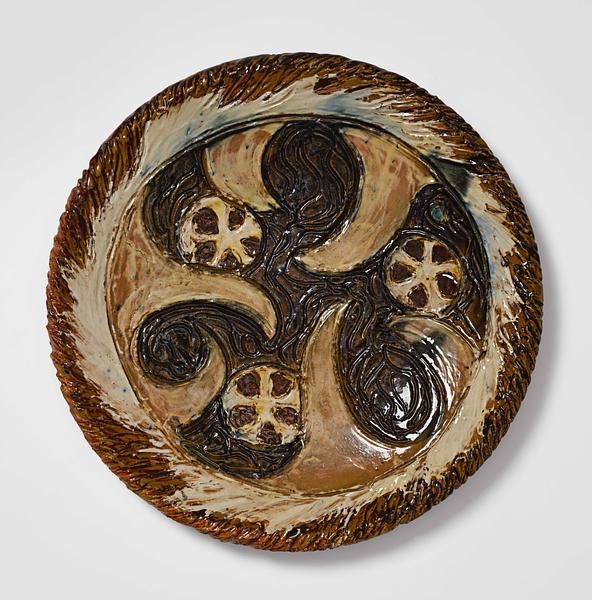Thorvald Bindesbøll originally planned to follow in the footsteps of his father, Gottlieb Bindesbøll (1800–1856), when he graduated as a fully trained architect from the Royal Danish Academy of Fine Arts in Copenhagen in 1876. However, he struggled to find work, and so he seized the opportunity when, in early 1880, he was invited by his friend, the architect Andreas Clemmensen (1852–1928), to decorate ceramics at Frauens Lervarefabrik in Copenhagen. Here Bindesbøll made his first ventures into the realm of ceramics, and in 1883 he continued his experiments with the material at Johan Wallmann’s pottery in Utterslev. In 1891 he left the workshop to work instead for G. Eifrig at Københavns Lervarefabrik in Valby, with which he remained associated until 1904. It was here that the dish in The David Collection was created.
The circular dish was made in 1893, a productive year for Bindesbøll. It was also an important period in his overall ceramic oeuvre, partly because his work began to take on a distinctive energy and vitality; partly because his decorative imagery grew increasingly abstract with organic, fluid elements and arabesque forms.
[1] When looking at the dish in The David Collection, the deep incisions in the clay and the rough surface structure with clear craquelure are particularly striking features. Also prominent is the expressive decoration, comprising a grooved circular framing band and a curved, multi-armed pattern.
During the fourteen years that Bindesbøll worked at Københavns Lervarefabrik, his favourite forms were jars and circular dishes, with which he worked until his death in 1906. However, Bindesbøll never turn his own dishes. They were turned by potters according to his instructions and designs, after which he went on to decorate the pieces with his tools and fingers, also applying glazes in a restricted palette of co-ordinating colours.
[2]
